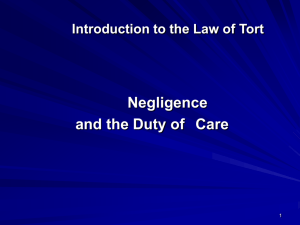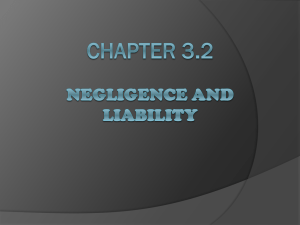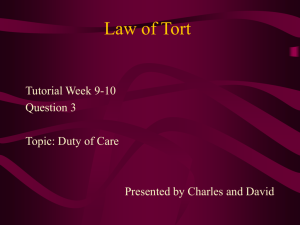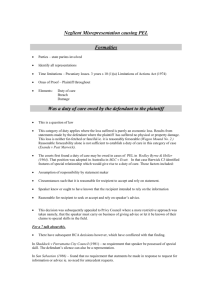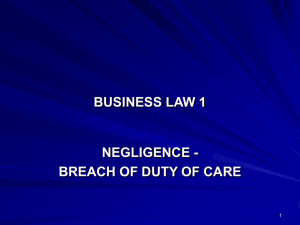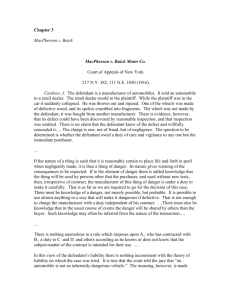Suggested answer – negligence model case study
advertisement
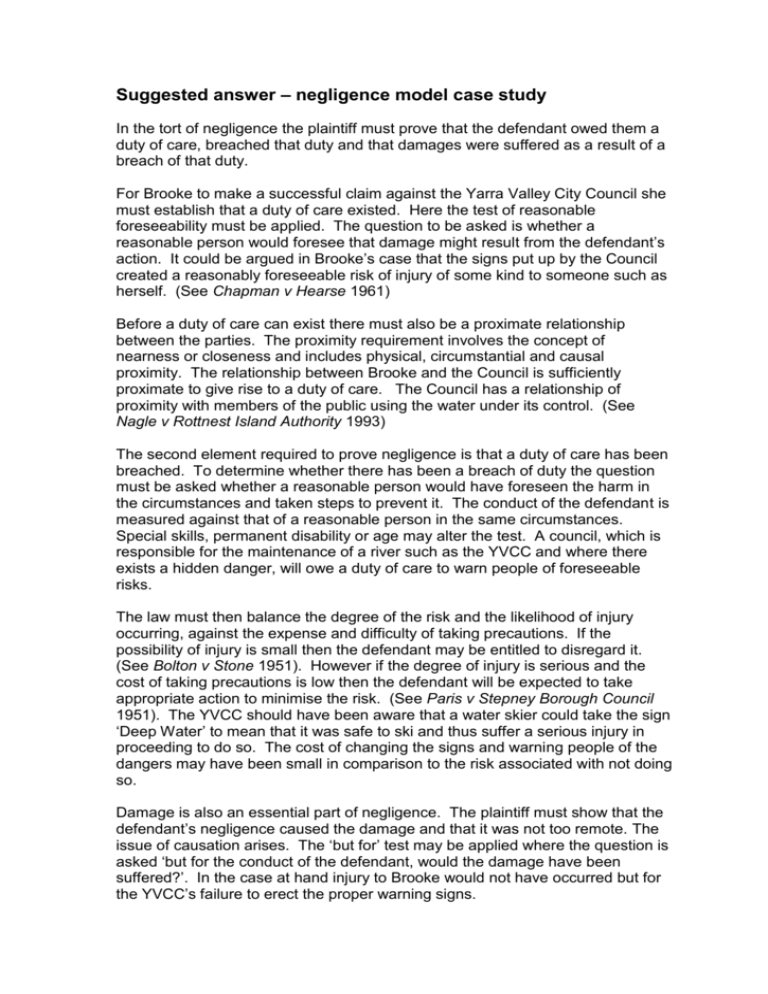
Suggested answer – negligence model case study In the tort of negligence the plaintiff must prove that the defendant owed them a duty of care, breached that duty and that damages were suffered as a result of a breach of that duty. For Brooke to make a successful claim against the Yarra Valley City Council she must establish that a duty of care existed. Here the test of reasonable foreseeability must be applied. The question to be asked is whether a reasonable person would foresee that damage might result from the defendant’s action. It could be argued in Brooke’s case that the signs put up by the Council created a reasonably foreseeable risk of injury of some kind to someone such as herself. (See Chapman v Hearse 1961) Before a duty of care can exist there must also be a proximate relationship between the parties. The proximity requirement involves the concept of nearness or closeness and includes physical, circumstantial and causal proximity. The relationship between Brooke and the Council is sufficiently proximate to give rise to a duty of care. The Council has a relationship of proximity with members of the public using the water under its control. (See Nagle v Rottnest Island Authority 1993) The second element required to prove negligence is that a duty of care has been breached. To determine whether there has been a breach of duty the question must be asked whether a reasonable person would have foreseen the harm in the circumstances and taken steps to prevent it. The conduct of the defendant is measured against that of a reasonable person in the same circumstances. Special skills, permanent disability or age may alter the test. A council, which is responsible for the maintenance of a river such as the YVCC and where there exists a hidden danger, will owe a duty of care to warn people of foreseeable risks. The law must then balance the degree of the risk and the likelihood of injury occurring, against the expense and difficulty of taking precautions. If the possibility of injury is small then the defendant may be entitled to disregard it. (See Bolton v Stone 1951). However if the degree of injury is serious and the cost of taking precautions is low then the defendant will be expected to take appropriate action to minimise the risk. (See Paris v Stepney Borough Council 1951). The YVCC should have been aware that a water skier could take the sign ‘Deep Water’ to mean that it was safe to ski and thus suffer a serious injury in proceeding to do so. The cost of changing the signs and warning people of the dangers may have been small in comparison to the risk associated with not doing so. Damage is also an essential part of negligence. The plaintiff must show that the defendant’s negligence caused the damage and that it was not too remote. The issue of causation arises. The ‘but for’ test may be applied where the question is asked ‘but for the conduct of the defendant, would the damage have been suffered?’. In the case at hand injury to Brooke would not have occurred but for the YVCC’s failure to erect the proper warning signs. The plaintiff must also demonstrate that the damage suffered was not too remote. The test is one of reasonable foreseeability. If the damage was reasonably foreseeable by the defendant then liability will flow (See Overseas Tankship (UK) Ltd V Miller Steamship Co. Pty 1967). Brooke may be successful in her claim against YVCC if she can prove that a council would be aware that there was a real risk of physical injuries of the kind sustained by her as a result of using the river due to the incorrect signs. See Wyong Shire Council v Shirt (1980) 146 CLR 40; 29 ALR 217 NB Relevance of vicarious liability must be considered also
